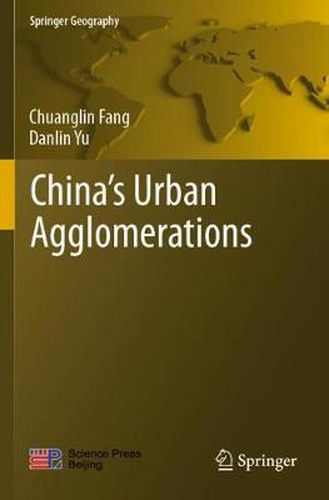Readings Newsletter
Become a Readings Member to make your shopping experience even easier.
Sign in or sign up for free!
You’re not far away from qualifying for FREE standard shipping within Australia
You’ve qualified for FREE standard shipping within Australia
The cart is loading…






This title is printed to order. This book may have been self-published. If so, we cannot guarantee the quality of the content. In the main most books will have gone through the editing process however some may not. We therefore suggest that you be aware of this before ordering this book. If in doubt check either the author or publisher’s details as we are unable to accept any returns unless they are faulty. Please contact us if you have any questions.
The book combs through extensively 32,231 urban agglomeration related works during the past 120 years to explore a theoretically supported and practically based definition of urban agglomeration. Based on the definition, the authors explore intensively the fundamental characteristics, spatiotemporal differentiation properties, and existing issues for China’s sustainable urban agglomeration development for the past 35 years. The study proposes that China shall focus on the construction and sustainable development of five primary national-level urban agglomerations. In the meantime, China shall also steadily and gradually construct 9 regional urban agglomerations and guide the development and growth of 6 local urban agglomerations. In the long run, China will have a hierarchical 5+9+6 closely integrated hierarchical urban agglomeration spatial structure. The study also proposes to coordinate the construction and development of urban agglomerations on the two belts and one road to form a national new urbanization development strategic pattern that enables the axis to connect the agglomerations while the agglomerations support the axis. Furthermore, the study investigates a variety of strategic thinking and suggestions for creating innovative, green and ecologically friendly, intelligent, low-carbon, open, culture-oriented, market-oriented and shared urban agglomerations in China.
This book will be a comprehensive reference both for scholars and decision-makers engaged in urban development and planning and environmental protection departments. It can also serve as textbook for graduate students of relevant fields.
$9.00 standard shipping within Australia
FREE standard shipping within Australia for orders over $100.00
Express & International shipping calculated at checkout
This title is printed to order. This book may have been self-published. If so, we cannot guarantee the quality of the content. In the main most books will have gone through the editing process however some may not. We therefore suggest that you be aware of this before ordering this book. If in doubt check either the author or publisher’s details as we are unable to accept any returns unless they are faulty. Please contact us if you have any questions.
The book combs through extensively 32,231 urban agglomeration related works during the past 120 years to explore a theoretically supported and practically based definition of urban agglomeration. Based on the definition, the authors explore intensively the fundamental characteristics, spatiotemporal differentiation properties, and existing issues for China’s sustainable urban agglomeration development for the past 35 years. The study proposes that China shall focus on the construction and sustainable development of five primary national-level urban agglomerations. In the meantime, China shall also steadily and gradually construct 9 regional urban agglomerations and guide the development and growth of 6 local urban agglomerations. In the long run, China will have a hierarchical 5+9+6 closely integrated hierarchical urban agglomeration spatial structure. The study also proposes to coordinate the construction and development of urban agglomerations on the two belts and one road to form a national new urbanization development strategic pattern that enables the axis to connect the agglomerations while the agglomerations support the axis. Furthermore, the study investigates a variety of strategic thinking and suggestions for creating innovative, green and ecologically friendly, intelligent, low-carbon, open, culture-oriented, market-oriented and shared urban agglomerations in China.
This book will be a comprehensive reference both for scholars and decision-makers engaged in urban development and planning and environmental protection departments. It can also serve as textbook for graduate students of relevant fields.